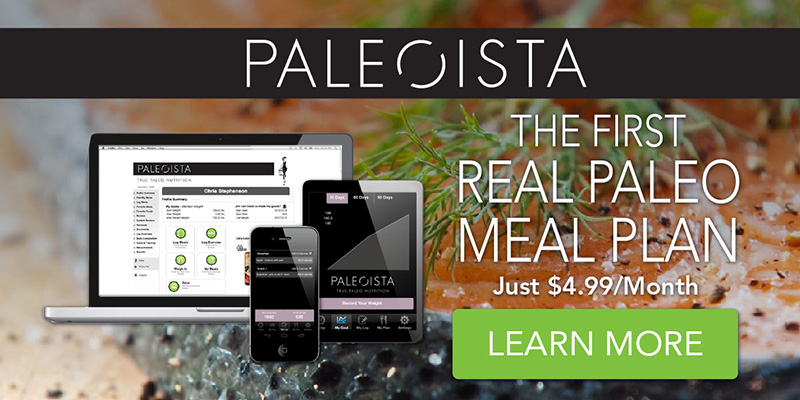Balancing Blood Sugar: What Foods to Eat and When to Stay on an Even Keel
Learning which foods to eat and which foods to avoid is only one part of the picture when opting to adopt a Paleo diet.
Food timing and the balancing of macronutrients to regulate your blood sugar is just as important as knowing how to formulate the perfect Paleo breakfast.
A couple of runny eggs cooked in coconut oil with a hefty serving of fresh, local greens and some avocado on top rather than that tired old, low calorie approach of a cup of corn flakes and skin milk is an outstanding way to nourish your body and brain to start the day after your morning workout.
But then what?
When should the next meal be, and what should it consist of?
Within my own journey through Paleo living over the last decade, I’ve made some significant changes in my own eating regime as well as that of my clients, all the while staying within the context of avoiding grains, dairy and legumes, and focusing on good fats, wild proteins and a sizeable amount of leafy greens.
First off, make sure to balance your macros.
Some people may find they feel best eating something closer to the protocol of a Zone Diet1, roughly 40/30/30. I created my own blend of a Paleo diet plus the Zone diet which I followed for quite some time, for example, until I researched more about becoming fat adapted and opted to up the fat percentage to as high as 80% on days following hard training blocks and then reducing to about 50% on other days.
Being fat adapted, by the way, is certainly not particular to athletes. In fact, busy executives, stressed out moms and frankly, anyone interested in achieving better mental focus would benefit from this approach.
However,, this certainly doesn’t mean you’ve got to move from your current routine that you’re used to and comfortable with to a higher, good-fat plan in one fell swoop.
This is where the balance comes in, and rather than feeling like you’ve got to become obsessive about weighing and measuring every last ounce of pasture-raised turkey, just use the Paleo template I presented on the Dr. Oz Show2 to create your own Paleo meal. Fill up your plate with veggies, add some good, clean protein and follow it up with a nice dose of fat such as olive oil or avocado as well as coconut oil.
When we eat this way, not only are we more satiated, we do a better job at absorbing all the nutrition from the great foods we’re eating and experience a solid, constant energy and balanced blood sugar that lasts us for several hours, until the next time we need to refuel.
Then, when lunchtime rolls around, use the same template for meal # 2.
Now, where does snacking come into the picture?
There is conflicting information in cyberspace about this topic. Is snacking between meals bad? Or is it better to have another meal of the same formulation mid morning and mid afternoon?
Here, it depends on how active you are and how well you’re doing at emotionally removing yourself form the idea that eating fat is bad and will prevent you from losing that extra fifteen you’ve been carrying around.
For someone who’s already quite fat adapted, and has perhaps learned how to properly implement intermittent fasting (“IF”), there’s no need to add snacks, even for the most athletic and active of us.
On the flip side, if you’re easing your way off of functioning on a low-fat, low-cal eating plan on which you were struggling on a daily basis with that awful insulin roller coaster effect, you may be better off adding that mid morning snack, which is really just another addition of the same exact meal template as described above.
Now, to the most confusing part: what about how eating factors around exercise? Don’t we need to carb-load or carb ‘back load’?
Not necessarily; again, it depends on how efficient the athlete has become at using fat as their primary fuel.
I spent years as a Paleo endurance athlete with the misconception that I needed to rely on extra yam, banana and other starchy or high glycemic albeit natural foods to prep for as well as recover from those long training days.
But it all takes time.
If you’re an endurance athlete who’s still eating a high percentage of your calories from carbs, even if they are Paleo-approved, you’d fare quite well to allow your body to become less dependent on them. Not only will you find performance improves, but so does recovery.
In the interim, while you’re still using carbohydrates, you may still opt to follow the recommendation of eating roughly a 4:1 ratio of higher glycemic or starchy carb with an easily digestible protein source in preparation for a long event or training session. Some good examples include a ripe banana mashed with a soft-boiled egg or some boiled yam with sliced turkey.
Meanwhile you can begin to help your body shift by incorporating some fasted sessions into your training you help create the change.
My advice to you: mind your macros, stay on track with timing, and most importantly, give your body time to adjust. If you feel off for a few days, know that this is part of the process and don’t sell yourself short by opting to eat a bagel with jam because you think you ‘need some carbs’ to even out your blood sugar.
Over time, your energy will soar, your mind will become sharper than ever before and your body will become leaner than you might have thought possible.
Clearly, it’s worth the wait!
REFERENCES
[1] http://www.zonediet.com/shop/books/the-zone/
[2] http://www.doctoroz.com/videos/paleo-diet-craze-pt-2






